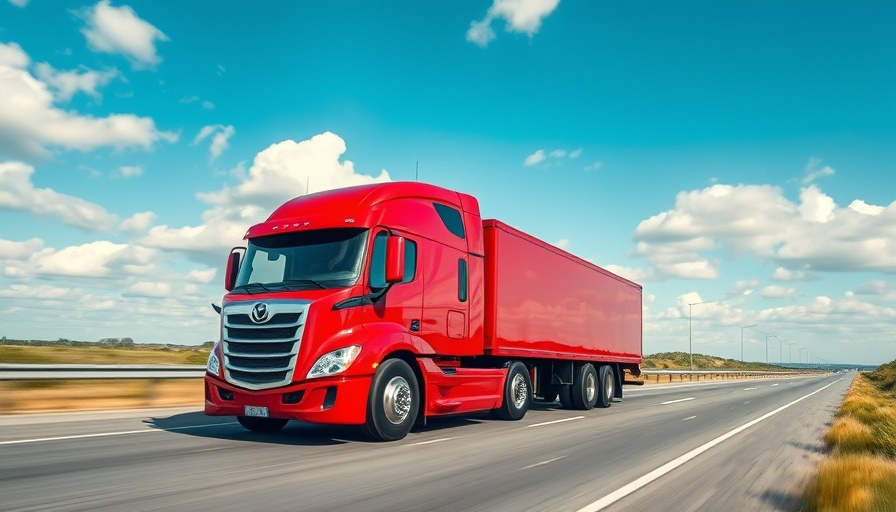
The Future of Autonomous Trucking: Kodiak's Bold Move
In a significant stride for the autonomous trucking industry, Kodiak Robotics has announced plans to go public through a merger with special purpose acquisition company Ares Acquisition Corporation II. This $2.5 billion valuation comes at a pivotal time, with a landscape shaken by the recent shutdowns of competitors like Embark and TuSimple. Kodiak's foray into the public market demonstrates the company’s confidence in its technology and business model, despite the broader skepticism surrounding SPAC offerings.
Understanding the SPAC Buzz
Special purpose acquisition companies (SPACs) have surged extensively as a vehicle for startups to enter public markets. These entities allow companies like Kodiak to bypass the traditional IPO route, facilitating quicker access to capital. However, the sentiment towards SPACs has considerably shifted since their peak in 2021, often raising questions about the sustainability of their business models, especially in capital-intensive industries like autonomous vehicle technology.
Kodiak's Unique Proposition in the Market
What sets Kodiak apart from its competitors is its current revenue generation—albeit modest—through its partnership with Atlas Energy Solutions, marking its debut in commercial trucking operations. Delivering two autonomous trucks to Atlas in January is a critical step that enhances Kodiak’s credibility. As Kodiak aims to expand its fleet, there's an opportunity to potentially validate the long-term viability of autonomous trucking technology.
The Technology Behind Kodiak's Success
Kodiak has logged an impressive 2.6 million miles driven autonomously. This experience positions them strategically as they pursue commercial long-haul operations. The company is not just a tech innovator but also a pragmatic operator, focusing initially on off-road autonomy as a quicker market entry strategy. By addressing immediate market needs, Kodiak can create a foothold that other pre-revenue startups have struggled to achieve.
Market Dynamics and Competitive Landscape
Kodiak's IPO plans are set against a backdrop of increased competition, particularly with Aurora Innovation poised to roll out fully driverless commercial trucking. This competitive dynamic means that Kodiak must not only innovate its technology but also navigate market sentiment and investor confidence to secure a leading position in the industry.
Leadership and Expertise: The Heart of Kodiak’s Vision
CEO Don Burnette’s journey—from working on self-driving technology at Google to co-founding Kodiak—provides a rich narrative underpinning the company’s ethos. His assertion that trucking is the “killer app for autonomy” reflects a deep conviction in the transformative potential of this sector. As Kodiak moves forward, leveraging Burnette’s extensive experience will be crucial in overcoming the challenges ahead.
Investors and Financial Backing: A Testament to Trust
The financial backing Kodiak has received, totaling over $110 million from various institutional investors, underscores the faith placed in their vision. This capital not only bolsters Kodiak’s balance sheet but also opens pathways for additional investment opportunities, further enhancing their ability to scale operations effectively.
Potential Risks and Market Challenges
While the prospects for Kodiak Robotics’ public debut show promise, it’s important to consider the inherent risks. The autonomous vehicle sector is fraught with regulatory hurdles and technical challenges that could hinder progress. Moreover, external market factors, such as trade policies and economic conditions, can impact funding and partnerships, further complicating growth trajectories.
Looking Ahead: A Roadmap for Future Success
Kodiak's approach to expanding its partner relationships and market presence is ambitious but promising. As the company prepares to transition into the public spotlight, it will need to maintain momentum and address investor concerns, particularly around profitability and scalability. Their claim of enhancing solutions in commercial trucking and public sectors suggests a broader vision that, if executed well, could indeed revolutionize the industry.
In conclusion, Kodiak's public market debut represents not just a significant milestone for the company but also a pivotal moment in the evolution of autonomous trucking. As it navigates this landscape, stakeholders will be keenly watching its every move.
 Add Row
Add Row  Add
Add 



Write A Comment